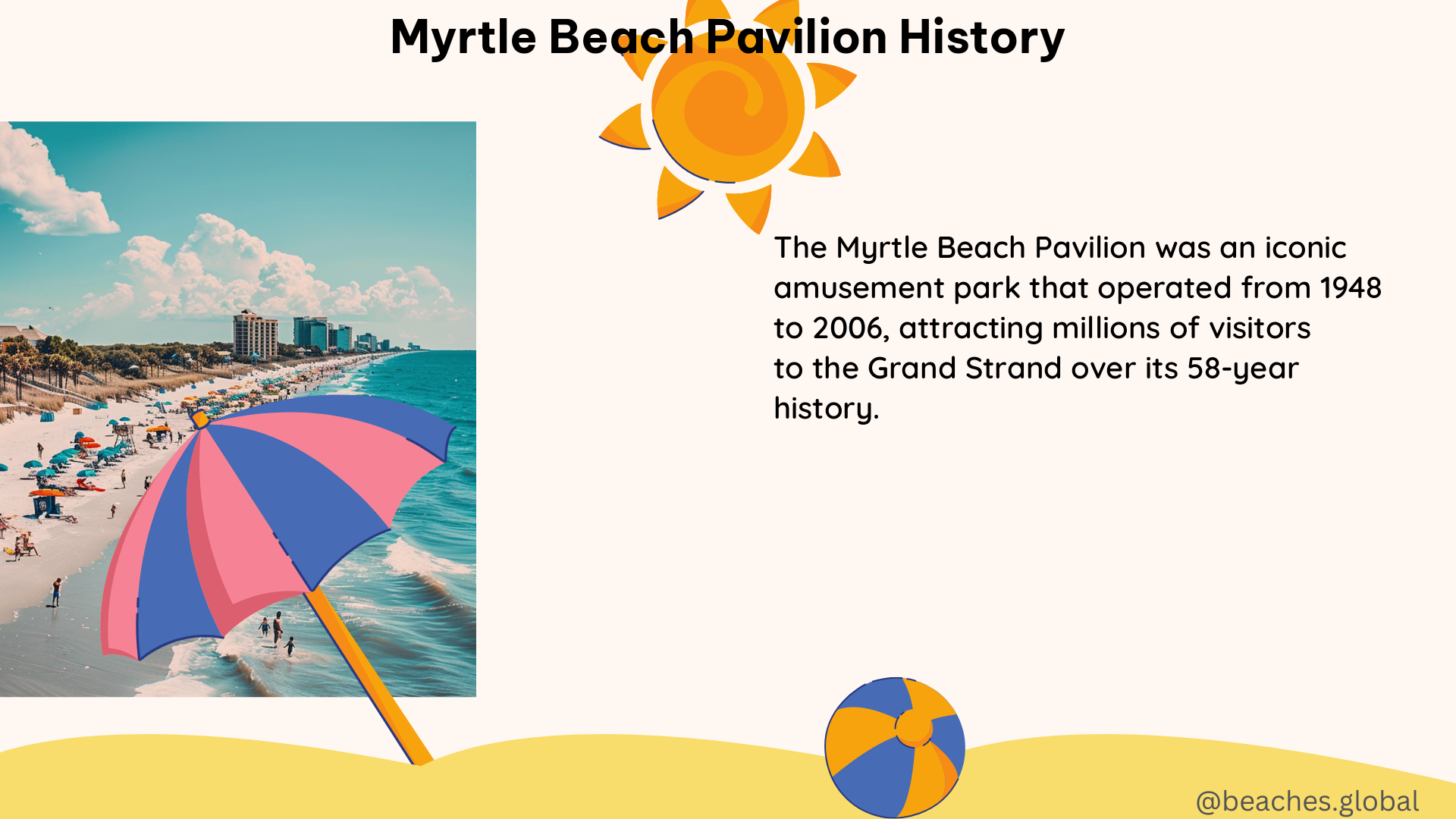The Myrtle Beach Pavilion was a beloved amusement park that operated in Myrtle Beach, South Carolina, from 1948 to 2006. This iconic landmark was owned and developed by the Burroughs & Chapin company, which played a significant role in shaping the Myrtle Beach area. The Pavilion’s history is a captivating tale of resilience, evolution, and the enduring spirit of a community.
The Pavilion’s Beginnings
The first Pavilion structure was built in 1908 as part of the Seaside Inn, Myrtle Beach’s first hotel. This one-story building served as a gathering place for guests, but it was unfortunately destroyed by a fire. The Pavilion was then rebuilt in 1923 as a two-story complex, which was further expanded in 1938. Tragically, another fire in 1944 burned the building to the ground.
The Iconic Pavilion of 1949

Undeterred, the Pavilion was rebuilt for the third time in 1949, this time using poured concrete. The new structure featured a large wooden dance floor on the second floor, along with a stage and grandstands. This iteration of the Pavilion, known as the “Magic Attic,” became a hub for dancing to beach music and other musical styles.
The Birth of the Amusement Park
In 1948, the amusement park component of the Myrtle Beach Pavilion began to take shape. A traveling carnival that had previously stopped in Conway, South Carolina, for the annual Tobacco Festival found a permanent home across the street from the Pavilion. After an agreement with Myrtle Beach Farms, the Myrtle Beach Pavilion Amusement Park was born, featuring a variety of acts, including ice skaters, bear acts, and talent shows.
Expansion and Ownership Changes
In 1950, just two years after the park’s opening, the Burroughs & Chapin company acquired the Central Amusement Company, the previous owners of the park. The new owners added 14 new rides to the park and expanded the concessions. Over the years, the park would continue to evolve, adding and exchanging numerous carnival-style flat rides, while also weathering several hurricanes.
The Pavilion’s Demise and Legacy
Despite the efforts of citizens to save the park, the Myrtle Beach Pavilion was ultimately lost to redevelopment in 2007. While the park officially closed and the site became a vacant lot, some of the rides and attractions were moved to Broadway at the Beach, preserving a piece of the Pavilion’s legacy.
The Myrtle Beach Pavilion was more than just an amusement park; it was a beloved community gathering place, a symbol of the city’s history, and a testament to the resilience of the people who called Myrtle Beach home. Though the Pavilion is no longer standing, its memory lives on, a cherished part of the city’s rich and vibrant past.
